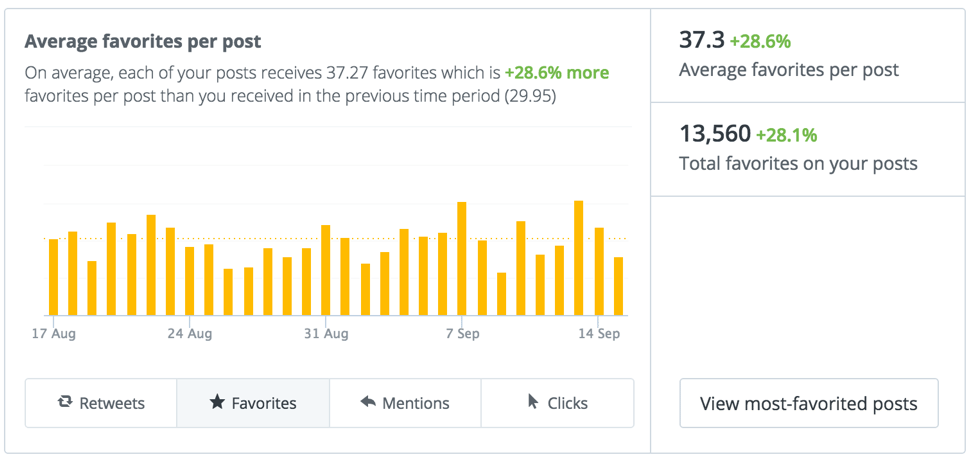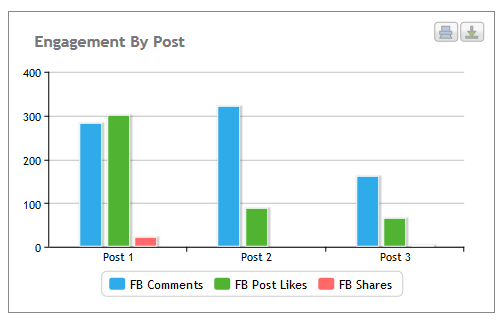In the present digital era, social media has become an essential and inseparable aspect of our daily lives. Whether it’s individuals sharing moments or businesses connecting with their audience, social media offers a powerful platform for engagement. However, merely having a presence on social media is not enough. To truly make an impact and drive results, it’s essential to measure and analyze social media engagement using robust analytics tools. In this article, we will delve into the world of social media engagement analytics and explore its significance in today’s business landscape.
What is Social Media Engagement Analytics?

Social media engagement analytics involves tracking and analyzing data related to user interactions with social media content. It provides valuable insights into how users engage with posts, videos, ads, and other forms of content on various social media platforms. By monitoring engagement metrics, businesses can evaluate the effectiveness of their social media strategies and make data-driven decisions to optimize their online presence.
Why is Social Media Engagement Analytics Important?
Understanding the importance of social media engagement analytics is crucial for businesses looking to make the most of their social media efforts. Here are some key reasons why it matters:
- Maximizing ROI: Social media engagement analytics helps businesses determine the return on investment (ROI) of their social media campaigns. By analyzing engagement metrics, companies can identify what content resonates best with their audience, allowing them to allocate resources more effectively.
- Audience Insights: By tracking engagement metrics, businesses gain valuable insights into their audience’s preferences, behaviors, and interests. These insights enable companies to tailor their content and messaging to better engage their target demographic.
- Measuring Campaign Effectiveness: Social media engagement analytics provides a quantitative way to evaluate the success of marketing campaigns. It allows businesses to measure key metrics such as click-through rates, conversions, and customer acquisition, providing actionable data for campaign optimization.
- Enhancing Brand Awareness: Analyzing engagement metrics helps businesses gauge the reach and impact of their social media presence. By identifying content that generates high engagement, companies can amplify their brand’s visibility and increase brand awareness.
Key Metrics in Social Media Engagement Analytics
When it comes to social media engagement analytics, several key metrics provide valuable insights into the performance of your content and campaigns. Let’s explore some of the essential metrics to consider:
Likes, Shares, and Comments
- One of the fundamental metrics in social media engagement is the number of likes, shares, and comments a post receives. These metrics indicate how users interact with your content and provide a sense of its popularity and relevance.
Click-Through Rates (CTR)
- CTR measures the percentage of users who click on a link or call to action within your social media post. It indicates the effectiveness of your content in driving traffic to your website or landing page.
Reach and Impressions
- Reach refers to the total number of unique users who have seen your social media content, while impressions represent the total number of times your content has been displayed. These metrics help you understand the potential visibility of your posts and the extent of their distribution.
Follower Growth
- Monitoring follower growth over time provides insights into the effectiveness of your content strategy and overall brand appeal. Sustained growth indicates a positive response from your audience, while a decline may suggest the need for strategy adjustments.
Sentiment Analysis
- Sentiment analysis involves evaluating the emotions and attitudes expressed by users in their interactions with your content. By analyzing sentiment, businesses can gauge the overall perception of their brand and make improvements if needed.
Analyzing Social Listening Engagement Data
While collecting social media engagement data is essential, analyzing that data effectively is equally important. Here’s a step-by-step process for analyzing social media engagement data:
1. Setting Goals and Objectives
- Before diving into the data, it’s crucial to establish clear goals and objectives for your social media efforts. Define what you want to achieve and align your analytics strategy accordingly.
2. Tracking and Monitoring Metrics
- Regularly track and monitor your chosen metrics to understand how your content and campaigns are performing. Look for trends, patterns, and anomalies that can provide valuable insights.
3. Identifying Trends and Patterns
- Analyze the data to identify trends and patterns in user behavior. Look for factors that contribute to higher engagement, such as specific content formats, topics, or posting times.
4. Benchmarking Performance
- Compare your social media engagement metrics against industry benchmarks and your competitors’ performance. Benchmarking provides context and helps you identify areas where you can improve.
Leveraging Social Media Engagement Analytics for Business Success
Effective utilization of social media engagement analytics can have a significant impact on your business’s success. Here are some ways to leverage these insights:
Understanding Audience Behavior
- Social media engagement analytics offers deep insights into your audience’s preferences, interests, and behaviors. Utilize this information to create content that resonates with your target audience and encourages active engagement.
Improving Content Strategy
- By analyzing engagement metrics, you can identify the type of content that generates the most engagement. Use these insights to refine your content strategy and create compelling, shareable content that captures your audience’s attention.
Enhancing Customer Engagement
- Engagement analytics helps you understand how customers interact with your brand on social media. Use this knowledge to foster meaningful conversations, respond to comments, and build a strong community around your brand.
Measuring Campaign Effectiveness
- Evaluate the success of your social media campaigns by tracking relevant engagement metrics. Determine which campaigns are driving the most significant results and optimize your future campaigns based on these insights.
Challenges and Limitations of Social Listening Engagement Analytics

While social media engagement analytics offers valuable insights, it’s essential to be aware of the challenges and limitations associated with this practice. Some key considerations include:
Data Accuracy and Reliability
- Ensuring data accuracy and reliability can be a challenge due to the dynamic nature of social media platforms. Fluctuations in algorithms and data reporting methods can impact the accuracy of metrics.
Privacy and Ethics
- Collecting and analyzing social media engagement data raises privacy and ethical concerns. It’s crucial to handle user data responsibly and comply with relevant data protection regulations.
Interpreting and Contextualizing Data
- Understanding the context behind the data is vital to draw accurate conclusions. Consider external factors, industry trends, and other variables that may influence engagement metrics.
Keeping Up with Algorithm Changes
- Social media platforms frequently update their algorithms, impacting how content is displayed and engagement is measured. Stay updated with these changes to ensure accurate analysis.
Best Practices for Effective Social Listening Engagement Analytics
To make the most of social media engagement analytics, follow these best practices:
1. Define Clear Objectives
Clearly define your objectives and align your analytics strategy accordingly. This ensures that your efforts are focused and targeted.
2. Select Relevant Metrics
Choose metrics that align with your objectives and provide meaningful insights. Focus on metrics that directly impact your business goals and help measure success.
3. Regularly Monitor and Analyze Data
Consistently track and analyze your social media engagement data. Regular monitoring allows you to identify trends, measure progress, and make data-driven decisions.
4. Experiment and Test
Don’t be afraid to experiment with different types of content, posting schedules, and engagement strategies. Test and analyze the results to refine your approach continuously.
5. Stay Updated with Industry Trends
Keep an eye on emerging trends and changes in the social media landscape. Adapting to evolving platforms and user behaviors ensures your engagement analytics remain relevant.
Case Study: Leveraging Social Media Engagement Analytics for Business Growth
A mid-sized e-commerce company worked on using a social engagement analytics tool which is AIM Insights. To leverage the power of the insights and data of social media, for enhancing the performance on digital platforms.
The Challenge
- Having a low interaction rate across the different social media platforms.
- Struggle to turn the followers into paying customers.
- Low traffic on the website from the social media campaigns.
The Approach
They build a strong plan to follow to reach their target goals to solve their challenges.
Step 1: Define Objectives
- Increase the engagement rate by 30% in three months.
- Drive 15% more traffic on the brand websites.
- Boost sales on social media by 20%.
Step 2: Implement Robust Analytics Tools
They choose to use AIM Insights to analyze their social media data and insights.
Step 3: Analyze Data and Identify Trends
The analyses led to some important data.
- Reel format videos generate 40% more engagement than static images.
- Users respond better to the engagement content, more than the promotional one.
The Results
- Increased Engagement
Increasing the engagement by 35% through 3 months, through posting more engagement video formats.
- Higher Website Traffic
The website traffic has increased by 20% from the social media.
- Boosted Sales
Social media sales increased by 30%, leading to increase in the sales revenue through the month.
- Improved Customer Insights
The customer analysis led to increase in the customer satisfaction for the brand.
Conclusion
In conclusion, social media engagement analytics plays a pivotal role in today’s digital landscape. By leveraging robust analytics tools and tracking key metrics, businesses can gain valuable insights into their audience’s behavior, optimize their content strategy, and measure the effectiveness of their campaigns. However, to truly unlock the potential of social media engagement analytics, it’s essential to stay updated with industry trends, define clear objectives, and regularly monitor and analyze data.
If you’re ready to take your social media strategy to the next level and unlock the full potential of engagement analytics, we invite you to request a demo from AIM Technologies. Our comprehensive analytics platform offers advanced features, intuitive reporting, and actionable insights to help you drive business success through social media engagement. Don’t miss out on this opportunity to elevate your social media presence and make data-driven decisions.
FAQs
Why is sentiment analysis essential in social media engagement analytics?
Because it provide data and insights about the audience opinions and feedback about the business. To be able to enhance the performance and upgrade it based on the audience preference.
Why is it important to set clear goals and objectives before analyzing engagement data?
To be able to know what are the data that you are searching about. And how you will get it from the analyzing process. And how it will be useful for your business and leads to enhance it.
How can social media engagement analytics provide insights into audience behavior?
It analyses the audience behaviors through their engagement. To understand them better, and now what they like and dislike about your content, to work on provide their intrest.
In what ways can engagement analytics improve a business’s content strategy?
With analyzing the audience behaviors and feedbacks about the content and the brand performance. You would be able to find the content strategy that matches your target audience preferences and interests.
How do businesses use engagement metrics to measure the effectiveness of their campaigns?
Through knowing the engagement metrics on the campaigns. And know what the audience think about them. To build better campaigns and improve their performance.




